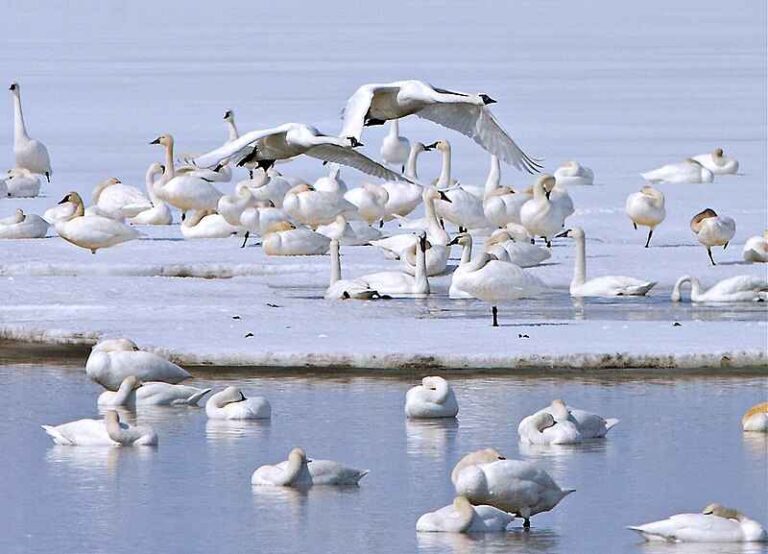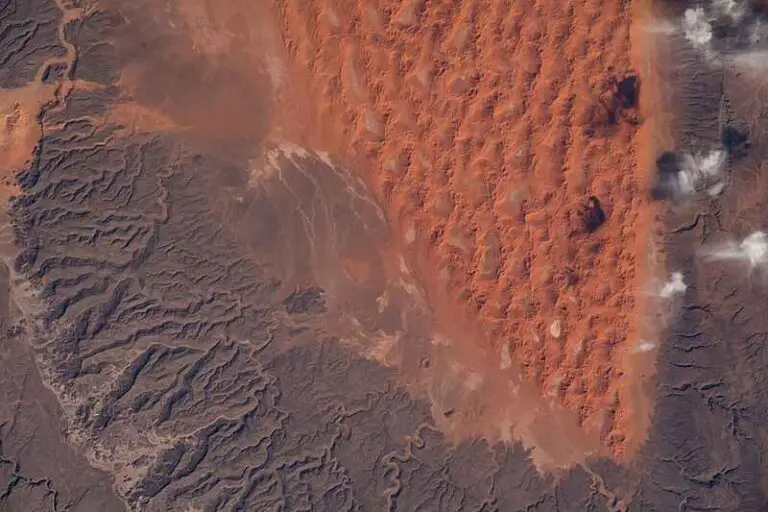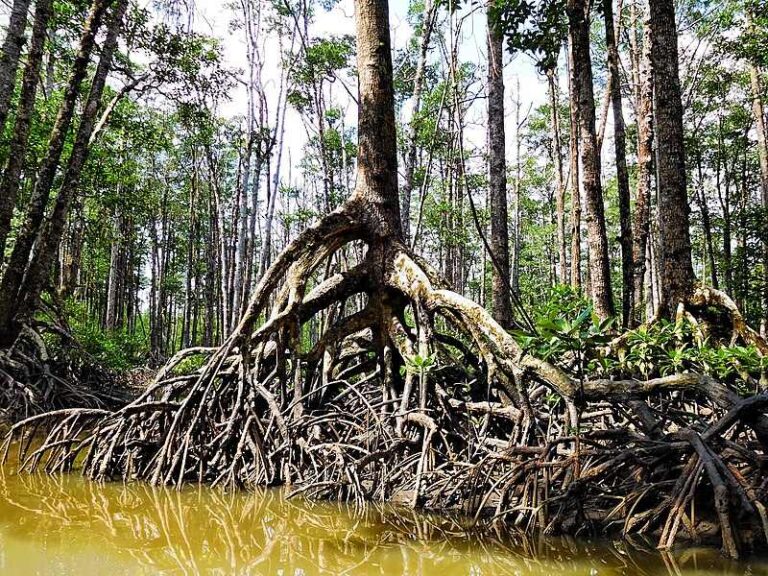7 Carbon Source Examples and Their Characteristics Explained
Carbon source examples are; biomass, fossil fuels, soil, combustion, deforestation, biodegradation, wildfires, earthquakes, subsidence, and volcanic eruption.
They may be broadly categorized as carbon source systems and carbon source processes.
This article discusses carbon source examples and their characteristics, according to the brief outline below;
-Carbon Source Examples: Systems
-Carbon Source Examples: Processes
-Carbon Source Examples: Systems
1). Biomass (as one of the Carbon Source Examples)
Biomass (organic matter) is the most basic carbon source on Earth. It occurs primarily as plant matter.
Plant matter itself may also act as a carbon sink. This is because plants absorb carbon dioxide (CO2) from the atmosphere in the process of photosynthesis, by which they produce their own food [6].
Plants are primary producers, meaning that they are responsible for capturing and converting solar energy to bioenergy, which is stored as chemical molecules that constitute what is known as plant biomass.
This plant biomass is circulated through the ecosystem, across all trophic levels of the energy pyramid, through various biological and biochemical processes. By this means it supports the production of animal biomass.
What the above sentence implies is that carbon source systems and processes work in collaboration to release carbon dioxide into the atmosphere.
Biomass (which is a carbon source system) only releases carbon dioxide when it is broken down through combustion and microbial biodegradation, among other processes.
The carbon which is stored in biomass may be in form of carbohydrates, fatty acids, or amino acids.
Also, biomass the basic component of all other carbon source examples. They occur in all mediums or systems that release carbon dioxide and in all carbon-emitting processes.
2). Fossil Fuels
Fossil fuels are the most common carbon sources.
This is due to the significant role which these fuels play in technology-related environmental degradation, which could occur in form of greenhouse gas emission, global warming and climate change [8].
By extension, fossil fuels also contribute to weather and pollution hazards like heat waves, air quality decline (by particulate matter and sulfuric gas emissions), and industrial stormwater pollution.
The role of fossil fuels as a carbon source, arises from their composition, which is predominantly organic. Fossil fuels comprise of compounds like methane, whose chemical structure is dominated by carbon and hydrogen.
When these fossil fuels degrade through microbial activity or combustion (in the process of heating, energy recovery, electricity generation), they release carbon dioxide along with other byproducts.
The above explanation accounts for all functions and effects of fossil fuels, including energy release, generation of electricity and degradation of the environment.
It also accounts for the use of biological remediation method (also called ‘bioremediation‘) to treat soil and water that are contaminated by fossil fuels.
Efforts to reduce the environmental impact of fossil fuels as a carbon source have been a major aspect of sustainable development, and have led to the advancement of renewable energy technologies like solar panels, wind farms, wave power converters, hydroelectric turbines, and geothermal power plants.

3). Soil (as one of the Carbon Source Examples)
Soil is both a source and a sink for atmospheric carbon [1]. These two roles are complementary, and compensate each other in a continuous process of natural recycling.
The soil is a good carbon source because of its ability to store or sequester large amounts of inorganic and organic carbon, which includes biomass, fossil fuels, and carbon dioxide. Sustainable technologies like carbon capture and storage are based on this storage capability.
Soil also contains micro and macro organisms that help to breakdown organic matter and release carbon dioxide.
-Carbon Source Examples: Processes
4). Combustion
Combustion is another word used to describe burning, which the the breakdown of materials by heat in the presence of oxygen.
It is the most common and effective process that acts as a carbon source.
Carbon can be released from all forms of combustion. Fossil fuels like coal, petroleum and natural gas are all major carbon dioxide producers.
Other types of fuels like nuclear fuel, liquid and gaseous biofuel, and solid biomass can also produce carbon dioxide through combustion.
It is important to note that combustion as a carbon source is mostly related to the production of energy, and occurs in the contexts of energy recovery, waste-to-energy, and waste management; as well as in the effort to generate electricity.
Therefore combustion can occur in form of fuel conversion, incineration, pyrolysis and deforestation, among others.
Aside carbon dioxide, combustion releases other forms of carbon into the atmosphere, like particulate matter or black carbon, which is known to have health consequences [2].
5). Deforestation (as one of the Carbon Source Examples)
Deforestation simply refers to the loss of forests. This could be through felling of trees or forest fires.
Aside the main process of deforestation, other related processes like subsequent combustion of firewood, processing of plant biomass to produce paper or biodegradable plastics, and processing of plant biomass in a biorefinery, also release carbon dioxide into the atmosphere.
Because carbon sequestration (storage) is one of the functions of forests, the stored carbon is released back to the atmosphere when all or part of these forests are lost [7] as a result of processes like forest management, industrialization, urbanization or severe erosion.
Deforestation is a cause of environmental problems like climate change and desertification [4].
The reverse process, which is afforestation (also reforestation or re-vegetation) is a carbon sink process which removes and stores atmospheric carbon.

6). Biodegradation
Biodegradation is a natural process which occurs as a result of the metabolic activities of a group of organisms that are generally referred to as ‘decomposers’.
These decomposers include microorganisms like bacteria. Their metabolism involves the secretion of enzymes that actively breakdown organic matter into smaller nutrients that are ingested by the organism for its own survival.
Carbon dioxide is one of the known products of microbial biodegradation. Because organic matter is present in all ecosystems, carbon can be released into the atmosphere through biodegradation in soil and water.
The emission of CO2 through biodegradation is a cyclic process. Carbon dioxide that has been emitted is re-absorbed by plants and distributed as biomass and energy, among living organisms.
7). Natural Hazards (as one of the Carbon Source Examples)
Natural hazards can cause the release of enormous amounts of carbon dioxide, especially when these hazards occur in carbon-rich systems [3].
Examples of natural hazards that act as carbon sources include earthquakes, subsidence, flooding, wildfires, and volcanic eruptions.
These events release carbon either by causing combustion and decomposition, or by breaching carbon sinks.
Earthquakes, subsidence, major floods, drought and desertification all cause carbon dioxide to be emitted from soil, water or vegetation by disrupting the equilibrium of these carbon sinks.
Volcanic eruption emits carbon dioxide among other toxic gases and particulate pollutants. In addition to carbon emission and global warming, volcanoes can cause temporary atmospheric cooling [5].
Natural systems that can be converter to carbon sources through hazards include bogs, forests, oceans and tundras.
Conclusion
Carbon source examples are;
1. Biomass
2. Fossil Fuels
3. Soil
4. Combustion
5. Deforestation
6. Biodegradation
7. Natural Hazards
References
1). Bhattacharyya, T.; Wani, S. P.; Pal, D. K.; Sahrawat, K. L. (2017). “Soil as Source and Sink for Atmospheric CO2.” Green Energy and Technology. Available at: https://doi.org/10.1007/978-981-10-3352-0_4. (Accessed 20 September 2022).
2). Chen, C.; McCabe, D. C.; Fleischman, L. E.; Cohan, D. (2022). “Black Carbon Emissions and Associated Health Impacts of Gas Flaring in the United States.” Atmosphere 13(3):385. Available at: https://doi.org/10.3390/atmos13030385. (Accessed 18 September 2022).
3). Cochard, R. (2013). “Natural Hazards Mitigation Services of Carbon-Rich Ecosystems.” Ecosystem Services and Carbon Sequestration in the Biosphere (pp.221-293). Available at: https://doi.org/10.1007/978-94-007-6455-2_11. (Accessed 18 September 2022).
4). Emmanuel, O. (2017). “Effects of Deforestation on Land Degradation.” Available at: https://www.researchgate.net/publication/318921682_Effects_of_Deforestation_on_Land_Degradation. (Accessed 20 September 2022).
5). Hopcroft, P. O.; Kandlbauer, J.; Valdes, P. J.; Sparks, S. J. (2018). “Reduced cooling following future volcanic eruptions.” Climate Dynamics 51(7393). Available at: https://doi.org/10.1007/s00382-017-3964-7. (Accessed 20 September 2022).
6). Johnson, M. P. (2016). “Photosynthesis.” Essays in Biochemistry 60(3):255-273. Available at: https://doi.org/10.1042/EBC20160016. (Accessed 20 September 2022).
7). Sedjo, R.; Sohngen, B. (2012). “Carbon Sequestration in Forests and Soils.” Annual Review of Resource Economics 4(1):127-144. Available at: https://doi.org/10.1146/annurev-resource-083110-115941. (Accessed 20 September 2022).
8). Shahzad, U. (2015). “Global Warming: Causes, Effects and Solutions.” Available at: https://www.researchgate.net/publication/316691239_Global_Warming_Causes_Effects_and_Solutions. (Accessed 20 September 2022).



